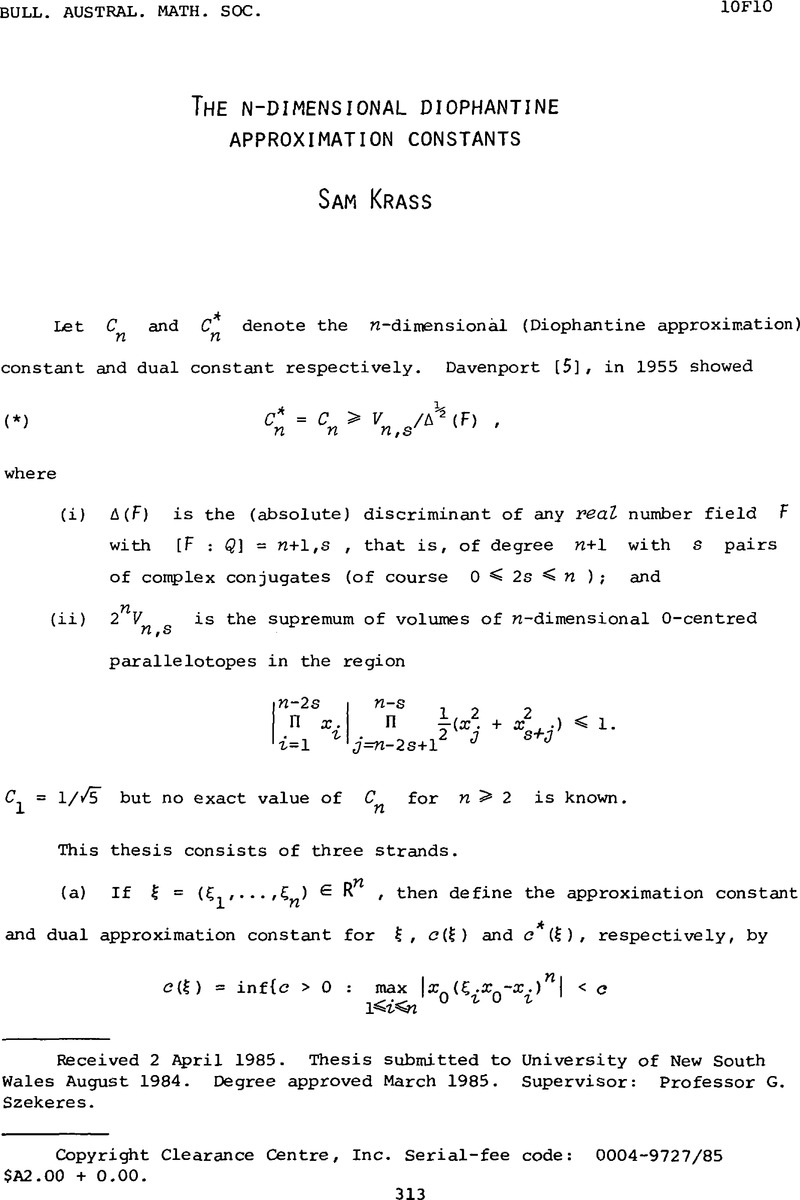No CrossRef data available.
Article contents
The N-dimensional diophantine approximation constants
Published online by Cambridge University Press: 17 April 2009
Abstract
An abstract is not available for this content so a preview has been provided. As you have access to this content, a full PDF is available via the ‘Save PDF’ action button.

- Type
- Abstracts of Australasian PhD theses
- Information
- Bulletin of the Australian Mathematical Society , Volume 32 , Issue 2 , October 1985 , pp. 313 - 316
- Copyright
- Copyright © Australian Mathematical Society 1985
References
[1]Adams, W.W.. “The best two-dimensional diophantine approximation constant for cubic irrationals”, Pacific J. Math. 91 (1980), 29–30.CrossRefGoogle Scholar
[3]Cassels, J.W.S. and Swinnerton-Dyer, H.P.F.. “On the product of three hongeneous linear forms and indefinite ternary quadratic forms”, Phil. Trans. Royal Soc. London. 248 (1955), 73–96.Google Scholar
[4]Cusick, T.W.. “Estimates for diophantine approximation constant”, J. Number Theory. 12 (1980), 543–556.CrossRefGoogle Scholar
[5]Davenport, H., “On a theorem of Furtwangler”, J. London Math. Soc. 30 (1955), 186–195.CrossRefGoogle Scholar
[6]Hunter, J., “The minimum discriminant of quintic fields”, Proc. Glasgow Math. Assoc. 3 (1957), 57–67.CrossRefGoogle Scholar
[7]Pohst, M., “On the computation of number fields of small discriminant including the minimum discriminant of sixth degree fields”, J. Number Theory, 14 (1982), 99–117.CrossRefGoogle Scholar
[8]Szekeres, G., “Multidimensional continued fractions”, Ann. Univ. Sci. Budapest Eotvos Sect. Math., 13 (1970), 113–140.Google Scholar




